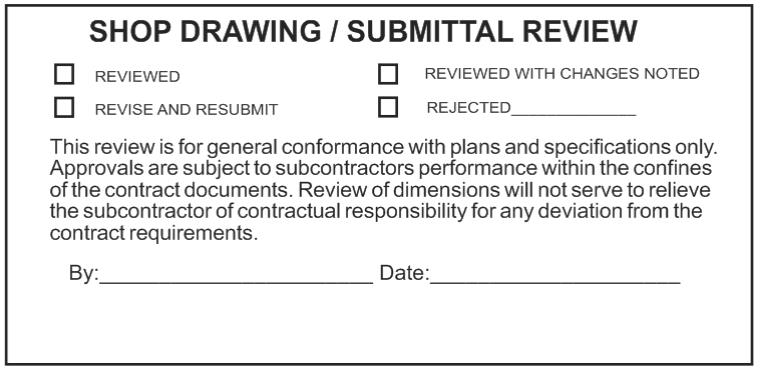I was sitting in a meeting the other day where everyone was asked what was on their minds about work, life, and architecture in general. I looked around the room, and for a moment I didn’t think anyone was going to give an answer. It wasn’t that anyone didn’t have anything on their mind, it was just such a broad question, I was thinking to myself “Where do you start?”.
This is the 43rd edition of #Architalks. A series of posts where a group of architects all write about a single subject, seeing how different, or similar, all of the stories can be. This month’s subject, learning from mistakes.
As about a million thoughts went through my head, the silence was broken by another attendee bringing up a worry he had been having working on the various projects he was assigned to. He was worried that he may be dimensioning the construction drawings wrong and didn’t know what to do to make sure it was right. Luckily the room was filled with people from various experience levels and were able to provide him with a wealth of feedback for him to move forward. The meeting ended, and it got me thinking about all of the project mistakes I’ve made over the years. Honestly, I don’t think it is possible for me to remember every single mistake I’ve made over my career. The good thing though, is that I’ve generally learned from those mistakes and become a better architect in the process.
While most of my mistakes have disappeared into the cavern of forgotten memories, there are a couple of mistakes that have stuck with me over the years. Items that I make sure to double check on every single project to make sure I never get burned by them again.
Lessons learned
Two examples come directly to mind. Years ago I was working on a project where I had been tasked with doing the drawings and the construction administration portions of a project where the owner had a very stringent list of acceptable items that they allowed on all of their projects. All the drawings had gone out just fine and everyone seemed pretty happy with how the project was moving forward. Fast forward a few months and all of the shop drawings and submittals were flowing into the office on a regular basis.

One of the submittals I was reviewing was for the roofing system. I started looking at the submittal, and saw that it was a fairly major company that was being submitted with a pretty common roofing material and details. Something I had seen on plenty of projects before, and really had no reason to not let this one go through. I probably should have slowed down just a bit on that one. It happened to be for a roofing system that the owner used on any of their projects, and not what we called out for on the drawings. Why on earth did I hurry this one through without double checking exactly what we wanted, exactly what the owner wanted? What was I thinking? Luckily, after quite a few heated conversations, it ended up getting resolved and the owner got what they wanted, and I got a life/work lesson to never just hurry it through even if it is a product that is familiar and typically acceptable. Double check, make sure, know that it is ok.
The other blunder I recall was, in comparison, pretty minor but still aggravating. There was a design for a circular desk with a circular ceiling feature directly above the desk. They circles were different sizes for some reason I definitely can not remember so many years later. On the floor plan I hadn’t shown the ceiling feature above since it was shown on the ceiling plan. Why show it twice, right? Wrong. The owner didn’t realize they were different sizes and once they figured that out, they wanted the sizes to match up. No big deal, to adjust the size of one of them, just should have shown it on both plans. Ok, so what was the big problem that has stuck with me. The floor plugs. Huh? The floor plugs which were cast into the concrete floor had been planned out to work with the desk of the original size. Oh yeah, and by the time that the change in size of the desk had been requested, they were already in the floor and with the change in size would no longer work with the desk. Again, we were lucky and were able to figure out a way to make it all work. The lesson had stuck with my already though, show all the information you can to explain the story of the project. Just because you know what is going on, doesn’t mean everyone else does.
Making these mistakes is just another part of becoming/being an architect. With all of the QA/QC people in firms now, most of these mistakes never see the light of day outside the office, and that is definitely a good thing for firms and owners. Nowadays, it’s not the mistakes that I know about that keep me up at night, it’s those mistakes that no one has realized yet. Did I make the right decision, did I remember to do that thing right, is there something in the project that I think is right that isn’t? I need to not worry so much, if there is a mistake, I bet I learn a pretty good lesson for the next project.
If you would like to see what the other Architalks bloggers have come up with for this months subject, click on the links below.
Lee Calisti, AIA – Think Architect (@LeeCalisti)
some kind of mistake
Lora Teagarden – L² Design, LLC (@L2DesignLLC)
Learning from mistakes in architecture
Eric T. Faulkner – Rock Talk (@wishingrockhome)
Archi-scar – That Will Leave a Mark!
Michele Grace Hottel – Michele Grace Hottel, Architect (@mghottel)
“Learning from Mistakes…”
Jeffrey Pelletier – Board & Vellum (@boardandvellum)
Are Architects Experts?
Keith Palma – Architect’s Trace (@cogitatedesign)
A, B, C, D, E…
Jim Mehaffey – Yeoman Architect (@jamesmehaffey)
Learning from Mistakes
Mark Stephens – Mark Stephens Architects (@architectmark)
Learning from mistakes
Steve Mouzon – The Original Green Blog (@stevemouzon)
How Living Traditions Learn From Mistakes




Your shop drawing approval stamp reminded me of the fact that my worst construction problem occurred when the contractor got in such a hurry that he went ahead with construction before getting approved shop drawings. So even if we have measures in place, they can always be short-circuited.
LikeLiked by 1 person
Oh definitely. I chose to stick to my own mistakes in this post. I could go on and on about mistakes I have seen due to things just happening in the field.
LikeLike